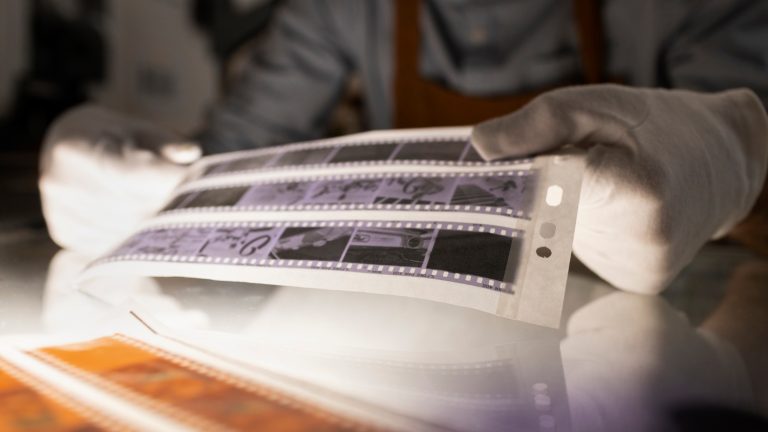Before sound was added to films, there were films known as silent ones. Many people like them for their distinctive look, and they are frequently connected to the time before talkies. Some individuals enjoy the slower pacing and more subtle storytelling in silent films, which can have a distinct aesthetic from more contemporary films. Silent films continue to have a devoted fanbase, and many people like their distinctive storytelling and aesthetic even online games are developed using such themes, while the operators like CasinoVerde make them a part of their game catalog.

The Silent Film Industry is vital in American cinema history, marking the birth of an art form that would evolve and captivate audiences worldwide. During the early 20th century, silent films laid the foundation for the modern film industry, shaping storytelling techniques and establishing iconic stars. Let us look at the captivating world of silent films, exploring their origins, evolution, and the lasting impact it has left on the cinematic landscape.
The Birth of Silent Films
In the late 19th century, inventors such as Thomas Edison and the Lumière brothers paved the way for motion pictures. It was in the United States that the first narrative films were produced, with Eadweard Muybridge’s “The Horse in Motion” and Edison’s “The Great Train Robbery” becoming early milestones. These silent films were characterized by their lack of synchronized sound and dialogue, relying solely on visual storytelling.
The Rise of Studios and Stars
As the popularity of silent films grew, studios began to emerge, forming the foundation of the American film industry. Companies such as Paramount Pictures, Warner Bros., and Universal Pictures gained prominence during this era. Alongside the studios, a new breed of actors and actresses captured the hearts of audiences. Stars like Charlie Chaplin, Mary Pickford, and Rudolph Valentino became household names, their performances resonating with viewers worldwide.
Technical Innovations and Artistic Expression
Despite the absence of spoken dialogue, silent films found innovative ways to convey emotions and narratives. Silent movie pioneers experimented with visual storytelling techniques, including intertitles for dialogue, elaborate set designs, and expressive acting. German director F.W. Murnau’s “Nosferatu” and Sergei Eisenstein’s “Battleship Potemkin” pushed the boundaries of cinematic expression, employing innovative camera angles and editing techniques that would later influence generations of filmmakers.
Cultural Impact and Global Reach
Silent films transcended language barriers, making them accessible to audiences worldwide. American films became global exports, and Hollywood became synonymous with the movie industry. The universal themes in silent films, from romance and comedy to adventure and drama, resonated with diverse cultures, establishing a common cinematic language connecting people across continents.
The Transition to Sound
In the late 1920s, the silent era drew close as sound technology revolutionized the film industry. Silent films gradually faded into history with the introduction of “talkies,” featuring synchronized sound and dialogue. However, the impact of the silent film era endured, shaping the way films were made and influencing future generations of filmmakers.
Preservation and Restoration Efforts
Silent films hold historical and cultural significance, and efforts have been made to preserve and restore these cinematic treasures. Organizations such as the Library of Congress and the Academy of Motion Picture Arts and Sciences have dedicated resources to safeguarding silent films, ensuring that future generations can appreciate the artistry and legacy of these early films.
Preservation efforts involve carefully restoring deteriorating film prints and digitization to ensure wider accessibility. The work done by these organizations allows modern audiences to experience the magic of silent films and gain a deeper understanding of the early days of cinema.
Famous Silent films
These films have left a significant mark on the history of cinema and continue to be celebrated for their artistic and storytelling achievements.
- “The Birth of a Nation” (1915), this epic historical drama, was a groundbreaking film in terms of its scope and storytelling techniques.
- “The Great Train Robbery” (1903), this early silent film, is considered one of the first narrative films known for its innovative editing and action sequences.
- “The Kid” (1921), this heartwarming comedy-drama follows the Tramp as he takes care of an abandoned child and showcases Chaplin’s iconic physical comedy.
- “Wings” (1927), this silent war film won the first Academy Award for Best Picture and is remembered for its spectacular aerial combat sequences.
- “Sunrise: A Song of Two Humans” (1927); this romantic drama explores themes of love, temptation, and redemption and is considered a masterpiece of silent cinema.
- “The General” (1926), this action-comedy follows a train engineer’s attempt to rescue his locomotive from Union spies during the Civil War.
- “Modern Times” (1936) – Although released during the transition to sound, this Charlie Chaplin film is predominantly silent and satirizes the mechanization and dehumanization of modern industrial society.
- “Safety Last!” (1923) – this comedy features Harold Lloyd performing a famous stunt in which he hangs from a clock on the side of a building.
- “The Gold Rush” (1925), this comedic masterpiece, follows the Tramp as he braves the harsh conditions of the Klondike Gold Rush in search of fortune and love.
- “Intolerance” (1916), this epic film, weaves together four stories from different historical periods, exploring themes of intolerance and social injustice.
The Silent Film Industry in the USA laid the foundation for the art form we know today as cinema. From its humble beginnings to the rise of iconic stars and groundbreaking techniques, silent films captivated audiences and paved the way for the evolution of storytelling on the silver screen. Though the era may have ended, the impact of silent films can still be felt in modern cinema, reminding us of the rich history and cultural significance of this golden era.
